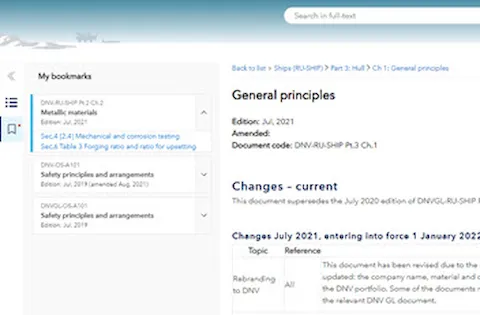A simplified way to access DNV’s rules and standards.
Full text search across all requirements
Rules and Standards Explorer provides a simplified way to access DNV’s rules and standards.
Features such as active links and full-text search assist you in locating relevant content quickly.
- Use the full-text search to search for a phrase, keyword, or document code, and get an overview of relevant requirements across more than 650 rules and standards.
- Navigate to previous editions.
Active cross-references
Active cross-references enable you to efficiently navigate to related content, saving you time on your journey through the requirements.
Personal bookmarks and notes
Bookmark your favorite documents and content to easily return to the information you use most frequently. Add personal notes to describe the content in a way that is relevant to you.
Participate in the hearing of new or revised rules and standards
Contribute to the development of DNV rules and standards by reviewing the hearing documents. This is an opportunity for all stakeholders to express their views and have those views considered in the development process of rules and standards.


